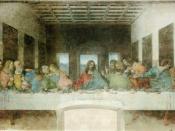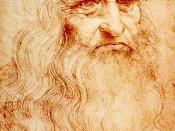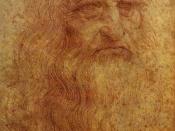Leonardo da Vinci, a Florentine artist, was one of the great masters of the High Renaissance. He was celebrated as a painter, sculptor, architect, engineer, and scientist. His love of knowledge and research was the keynote of both his artistic and scientific efforts. His pioneering in the field of painting influenced the course of Italian art for more than a century after his death, and his scientific studies, particularly in the fields of anatomy, optics, and hydraulics, projected many of the developments of modern science.
Leonardo was born on April 15, 1452, in the small Tuscan town of Vinci, near Florence. He was a son of a wealthy Florentine notary and a peasant woman. In the mid-1460s the family settled in Florence, where Leonardo was given the best education that Florence, the intellectual and artistic center of Italy, could offer. He rapidly advanced socially and intellectually. He was handsome, very persuasive in conversation, and a satisfactory musician and improviser.
Around 1466 he was apprenticed as a studio boy to Andrea del Verrocchio, the leading Florentine painter and sculptor of his time. In Verrocchio's workshop Leonardo was introduced to many undertakings, from the painting of altarpieces and panel pictures to the creation of large sculptural projects in marble and bronze. In 1472 he was entered in the painter's guild of Florence, and in 1476 he is still mentioned as Verrocchio's assistant. In Verrocchio's Baptism of Christ the kneeling angel at the left of the painting is by Leonardo.
In 1478 Leonardo became an independent master. His first commission, to paint an altarpiece for the chapel of the Palazzo Vecchio was never completed. His first large painting, The Adoration of the Magi, left unfinished. Other works ascribed to his youth are the Benois Madonna, the portrait Ginerva de' Benci, and the...


